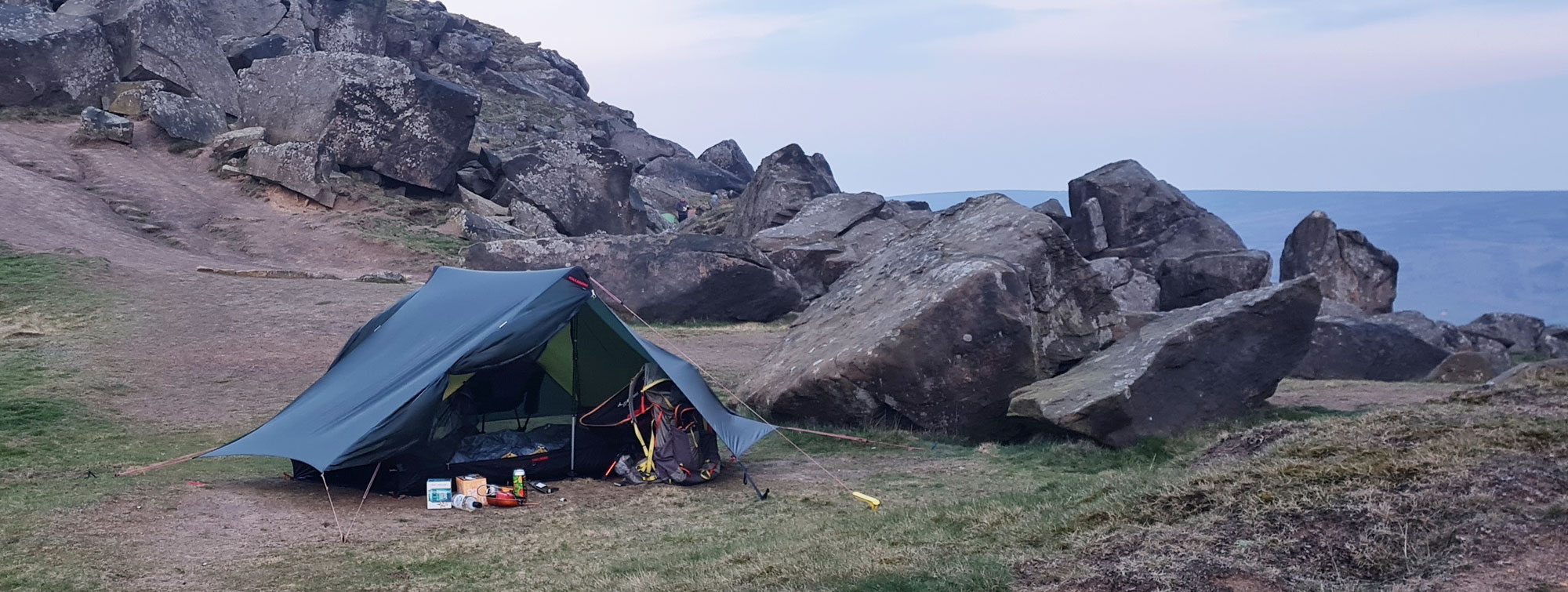Anaris Tent Review - “The tent's most impressive feature is the 50 Denier Nylon bathtub and floor, which is incredibly rugged”
Posted by Andy Neil on Nov 07, 2022

Combining the packability and lightweight design of a trekking pole tent with the durability and shear polish of a Hilleberg, the Anaris is a dream tent to some, myself included. I was an early adopter of the Anaris when it launched in 2020, and already familiar with Hilleberg tents as, at the time, I was using a Soulo, so I could already attest to their craftsmanship. I had also recently completed the Coast to Coast using a single-skin trekking pole tent from Six Moon Designs, The Lunar solo, so I was familiar with trekking pole tents, both their pros and cons.
So, when The Anaris was made available, I was the first in the queue. The obvious advantage of a trekking pole tent is that it eliminates the need to bring tent poles; instead, hiking poles are used to support the tent. Of course, this saves on weight but also makes the tent incredibly malleable, so it can easily be accommodated in your rucksack. Not carrying long rigid tent poles can also help to reduce pack size, which can go a long way when saving weight. Traditionally, trekking pole tents, in an attempt to save as much weight as possible, are single-skin; for many, this is a drawback, as condensation will inevitably be an issue. However, The Anaris is a two-skin construction, the inner and the fly being 6 inches apart. The additional airflow and the DWR coating on the inner tent fabric eliminate any issue with condensation.
The Anaris uses two trekking poles, set to 125 to 135 cm (50 to 53 inches) in length, to support the tent; this provides a vast amount of headroom, liveable space inside the tent and two enormous vestibules that can accommodate a lot of gear and still be used for cooking if needed. The Anaris is a two-person tent, which can easily accommodate you and a partner with ample room for gear, but I predominately use this tent solo. Using this tent solo gives you plenty of room to sprawl and keep your gear organised, especially if you are confined to the tent for a while or on longer treks. The high sides can be an issue in strong winds. Lowering the hiking poles can help in this situation, but in extreme winds, I would look for a sheltered spot to camp; this isn't a summiting tent. Pitching the tent can take a little getting used to, and is without a doubt easier with two people, but with practice, you can have the tent pitched solo in less than 5 minutes.
Heavier (1260g, plus an additional 260g if also using the footprint) than most of its trekking pole tent counterparts, the Anaris compensates for this by being much more durable. The tent's most impressive feature is the 50 Denier Nylon bathtub and floor, which is incredibly rugged and gives you the confidence to pitch just about anywhere, especially if you use the footprint. The outer tent fabric is very light yet tough, Kerlon 1000 ripstop nylon, coated on both sides with three layers of silicone, and has a tare strength of over 8kg.

The combination of the tents' lightweight, packable design, ample living space and hardwearing durability makes this the perfect tent for long treks. The uncertainty of longer trips, not knowing where you are camping or what the weather will be in a week all play to the Anaris's strengths. Though the Arnaris will always pitch in the classical triangular shape, you do have several options when pitching, depending on the weather, as mentioned the lower the poles are set, the more weather resistant the tent is; however, on fine days, the fly sheet can be rolled away, which opens the tent up, allowing for fantastic views from inside the tent, I have had some wonderful evening in the lake district watching shooting stars whilst being swaddled in my down sleeping bag.
There are, of course, some things I would change about the Anaris, I would like to see dual zips on the internal doors, so I can reach something outside the tent without fully unzipping the door. Inside the tent, no consideration to internal storage has been made, undoubtedly to save on weight, but as someone who wears glasses, I would appreciate somewhere out of the way to stash valuables and things you need close at hand, such as medication. These are minor issues but do detract from this tent's overall experience.
This tent isn't for the battle-hardened ultra-lightweight crowd, but if, like me, you are still weight conscious and want a dependable tent that can protect you in all but the most severe weather, that does not compromise on liveable space or build quality, this could be the tent for you.

|
||
 |
||
|
Andy Neil |
||
|
Andy has been a keen long-distance hiker and wild camping enthusiast since he completed the Cleveland Way in 2015. Since then, he has walked thousands of trail miles all over the UK and is an active member of the Wild Camping UK community, being an admin of the largest wild camping community on Facebook. He strongly advocates for responsible wild camping and believes it is important to leave no trace when camping in the wilderness. He joined the UOG team in 2021 and works as a website developer and content creator. |
||
